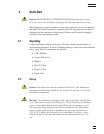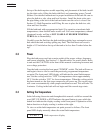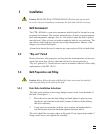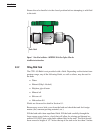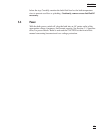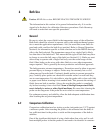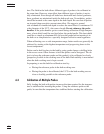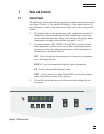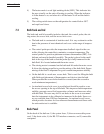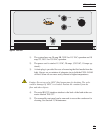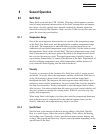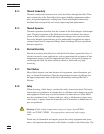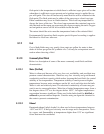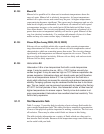
tion. The fluid in the bath allows different types of probes to be calibrated at
the same time. However, stem effect from different types of probes is not to
-
tally eliminated. Even though all baths have horizontal and vertical gradients,
these gradients are minimized inside the bath work area. Nevertheless, probes
should be inserted to the same depth in the bath liquid. Be sure that all probes
are inserted deep enough to prevent stem effect. We suggest a general
rule-of-thumb for immersion depth to reduce the stem effect to a minimum: 20
x the diameter of the UUT + the sensor length. Do not submerge the probe
handles. If the probe handles get too warm during calibration at high tempera
-
tures, a heat shield could be used just below the probe handle. This heat shield
could be as simple as aluminum foil slid over the probe before inserting it in
the bath or as complicated as a specially designed reflective metal apparatus.
When calibrating over a wide temperature range, better results can generally be
achieved by starting at the highest temperature and progressing down to the
lowest temperature.
Probes can be held in place in the bath by using probe clamps or drilling holes
in the access cover. Other fixtures to hold the probes can be designed. The ob
-
ject is to keep the reference probe and the probe(s) to be calibrated as closely
grouped as possible in the working area of the bath. Bath stability is maximized
when the bath working area is kept covered.
In preparing to use the bath for calibration start by:
• Placing the reference probe in the bath working area.
• Placing the probe to be calibrated, the UUT, in the bath working area as
close as feasibly possible to the reference probe.
6.3 Calibration of Multiple Probes
Fully loading the bath with probes increases the time required for the tempera
-
ture to stabilize after inserting the probes. Using the reference probe as the
guide, be sure that the temperature has stabilized before starting the calibration.
22
6 Bath Use




